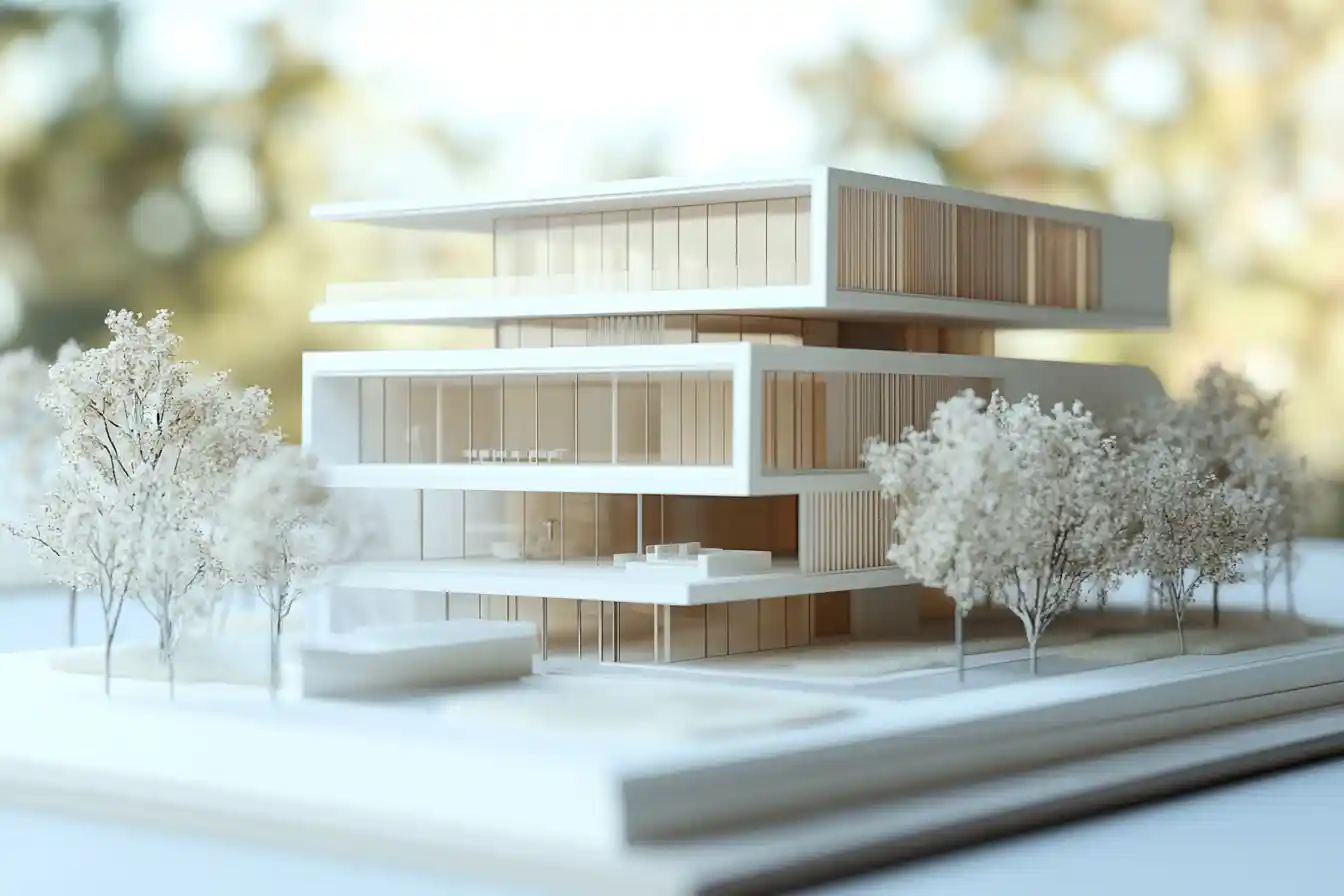Creating an impactful architectural presentation can make or break your project. The quality of our work is crucial, but how we present it often determines whether we win over clients and stakeholders. An engaging, well-structured pitch not only showcases our design prowess but also builds trust and enthusiasm.
Understanding Your Audience
Tailoring Content to Viewer Needs
Identifying our audience’s needs helps us deliver impactful presentations. Decision-makers often seek specific data, clients look for creative vision, and stakeholders prioritize budget details. We customize our content to address these distinct needs, focusing on clear, concise information relevant to each viewer. For instance, when presenting to financial stakeholders, we highlight cost breakdowns and ROI projections. Conversely, showcasing innovative design concepts and project benefits resonates more with creative clients. By tailoring our content, we ensure every audience segment feels informed and engaged.
Engaging Different Types of Audiences
Engaging varied audiences requires diverse strategies. We use high-quality images and 3D renderings to captivate visually-oriented viewers. Executives often appreciate clear data visuals, so we include charts and tables to illustrate key points. For tech-savvy audiences, incorporating advanced tools like VR walkthroughs offers deeper immersion into design concepts. Additionally, using simple language ensures accessibility across different expertise levels, preventing misunderstandings. By diversifying our presentation approach, we maintain interest and appeal to everyone, from tech enthusiasts to finance-focused stakeholders.

Structuring Your Presentation
Sequential Flow and Key Points
Structuring a presentation with a clear sequential flow enhances audience understanding. Start by presenting an overview of the entire presentation. This glimpse keeps the audience aware of upcoming topics and maintains their focus. Indicate the structure by including titles or indicators on each slide to show the current position within the presentation.
Second, focus on making key points for each section. Use bullet points sparingly and prioritize visual aids such as graphs, renderings, and charts. This approach avoids the pitfalls of reading directly from slides, keeping the audience engaged. By effectively mapping out your presentation, the flow remains coherent, and the information becomes digestible.
Keeping It Simple and Focused
Keeping the presentation simple and focused ensures clarity. Avoid cluttering slides with excessive text or complex jargon. Present your ideas with high-level vision balanced by specific details. This approach captures the audience’s interest while making the content accessible. Engage them with a straightforward narrative complemented by relevant visuals.
Use concise language and avoid redundant information. Tailor the depth of detail based on your audience’s expertise. For example, provide more strategic high-level details for executives and more in-depth design elements for technical audiences. Simplicity and focus help in maintaining attention and driving home the core message.
Design Techniques
Effective Use of Visuals
Visuals make a significant impact in an architectural presentation. High-quality visuals like renderings, 3D models, and VR walkthroughs engage the audience and visually communicate design ideas. To create effective visuals, prioritize clarity and detail while keeping the visuals aligned with the overall narrative of the presentation. When visuals lack details or don’t align with the narrative, they can confuse the audience and dilute the message we aim to convey. Use diagrams to break down complex concepts and ensure they are easy to interpret. Additionally, interactive elements such as VR can immerse the audience in the design, enhancing their understanding and engagement.
Choosing the Right Colors and Fonts
Color and font choices play a crucial role in defining the visual appeal and readability of an architectural presentation. Subtle, monochrome palettes work well for maintaining a professional look, but vibrant colors can be used strategically to highlight key points or elements. Consistency is key; use colors and fonts that complement the design and each other. Stick to a single font family to maintain uniformity, but vary the font sizes to create a visual hierarchy that guides the audience’s attention. Avoid overly decorative fonts as they can detract from readability and clarity. The right combination of colors and fonts ensures that the presentation not only looks good but also effectively communicates the core message.

Delivering Your Presentation
Rehearsing Key Points
Practicing and rehearsing your presentation ensures smoother delivery and helps you identify structure, flow, and timing issues. Focus on mastering key points and transitions to maintain a cohesive narrative. Rehearse multiple times in different settings to build confidence.
Interacting with Your Audience
Engage your audience by making eye contact and using body language to convey your message effectively. Invite participation through open-ended questions, polls, and feedback opportunities. Interaction prevents the presentation from feeling stale and promotes a dynamic exchange of ideas.
Handling Feedback
Preparing for Critiques
Architectural presentations thrive on interaction. We start by mentally preparing for critiques with an open mindset. Understanding that critiques aim to improve our work, not criticize us personally, helps frame them positively. Before presenting, we identify potential weak areas and develop counterpoints or explanations. This readiness ensures that we can tackle questions confidently and keep the discussion productive.
Using Feedback Constructively
Feedback is a catalyst for growth. After receiving feedback, we categorize comments based on their relevance and feasibility. Prioritizing feedback that can enhance functionality, such as suggestions for spatial layout improvements or material choices, ensures impactful revisions. We often revisit our initial goals for the project and compare them with the feedback to maintain alignment. When integrating feedback, we make specific, measurable adjustments rather than vague changes. This method enables us to track the impact of revisions and continuously refine our architectural presentations.

Conclusion
Impactful architectural presentations require strategic preparation, effective visual elements, and keen audience engagement. By structuring our presentations clearly, we ensure our audience follows and understands our concepts. Here’s a concise recap of our top tips:
- Know Your Audience
Tailor content to match the audience’s technical knowledge. Simplify technical terms for non-technical audiences and provide detailed information for technical ones. - Clear Structure
Organize the presentation with an introduction, main body, and conclusion, setting clear objectives and logical flow. This helps our audience understand and retain information better. - Use Visual Aids
Include high-quality visuals like renderings, 3D models, VR walkthroughs, and data visuals. These enhance comprehension and maintain engagement. - Simplicity is Key
Avoid clutter and use concise language. Focus on essential details, so our core message is clear and impactful. - Effective Design Techniques
Implement effective design techniques with clear, detailed, and aligned narratives. Consistent color schemes and fonts enhance visual appeal and readability. - Engaging Delivery
Rehearse key points, master transitions, and engage the audience with eye contact, body language, and interactive elements. This fosters dynamic exchanges and keeps the audience involved. - Handle Feedback Constructively
Prepare for critiques with an open mindset. Categorize feedback, prioritize impactful revisions, and make specific, measurable adjustments to refine the presentation.
Creating impactful architectural presentations involves balancing detailed content, visual appeal, and audience engagement. By following these tips, we can deliver presentations that not only captivate but also clearly communicate our designs and ideas.
- architectural presentation inspiration
- architectural presentation skills
- architectural presentation strategies
- architectural presentation tips
- architectural storytelling in presentations
- architecture presentation design tips
- architecture presentation graphics
- architecture presentation techniques
- architecture project presentations
- best architecture presentation practices
- creating architectural presentations
- effective architectural presentations
- engaging architecture presentations
- enhancing architectural presentations
- how to present architecture projects
- impactful architecture presentation
- improving architectural presentation
- tips for architectural model presentations
- visual impact in architecture presentations
















Leave a comment